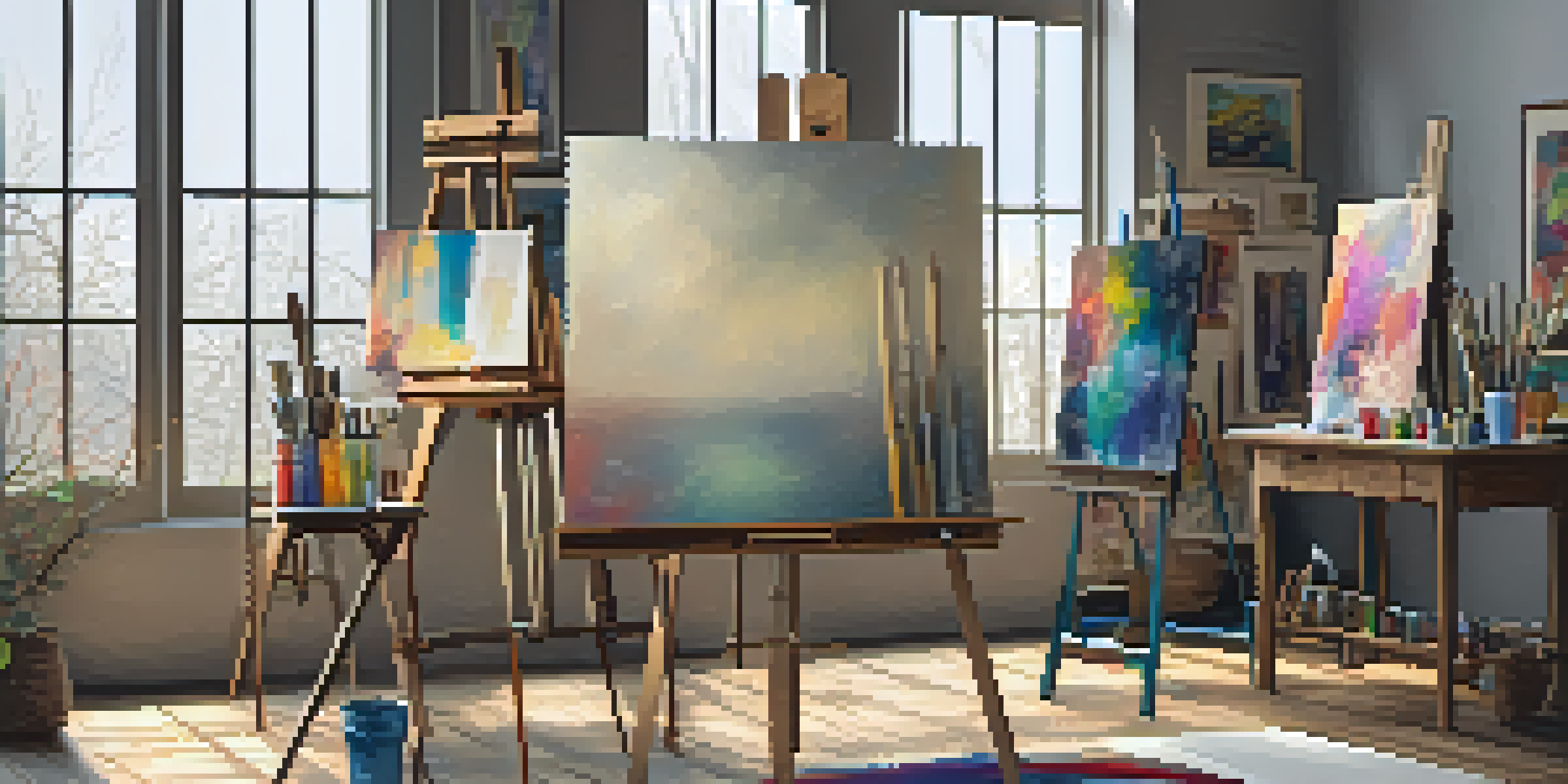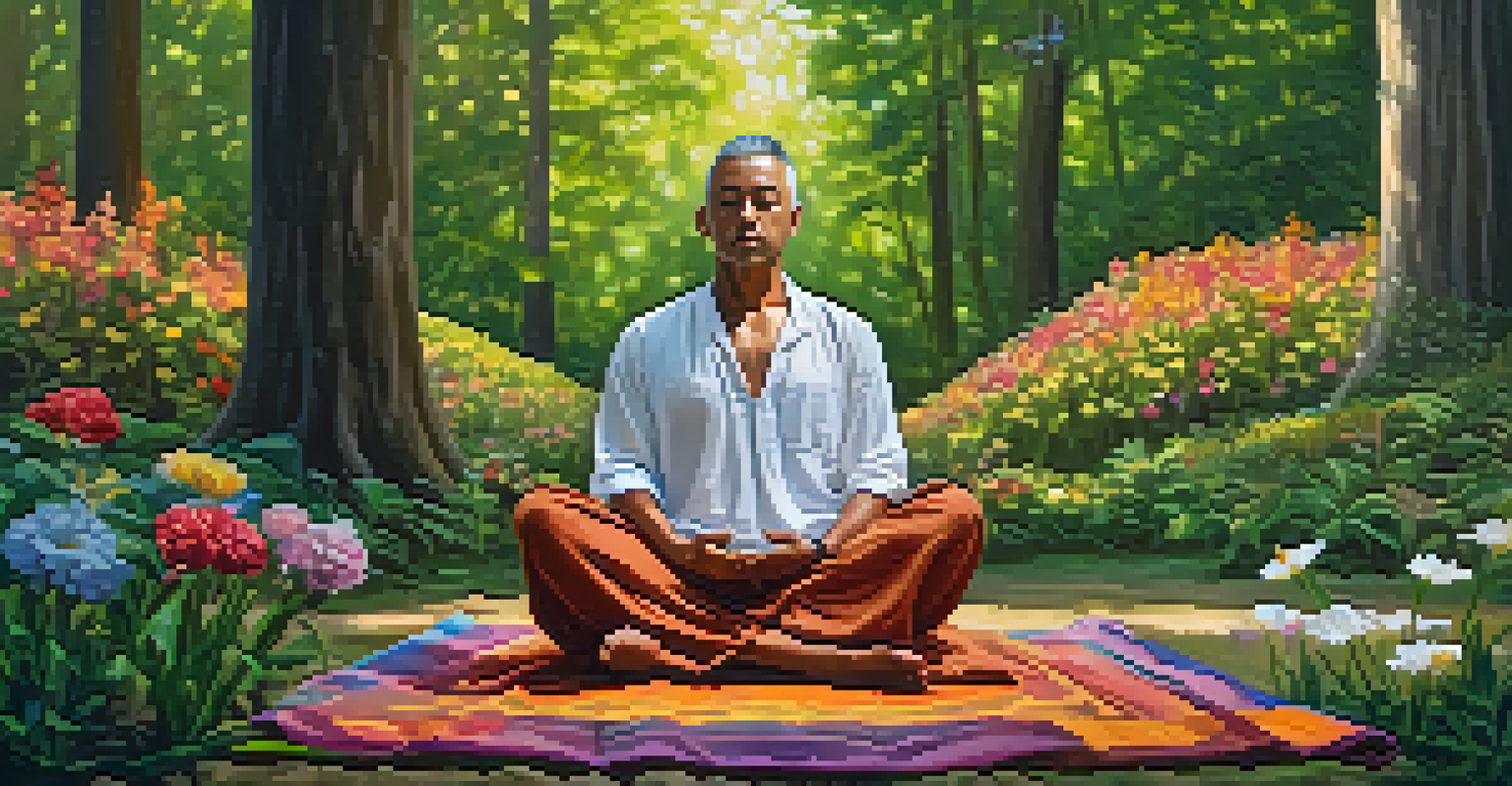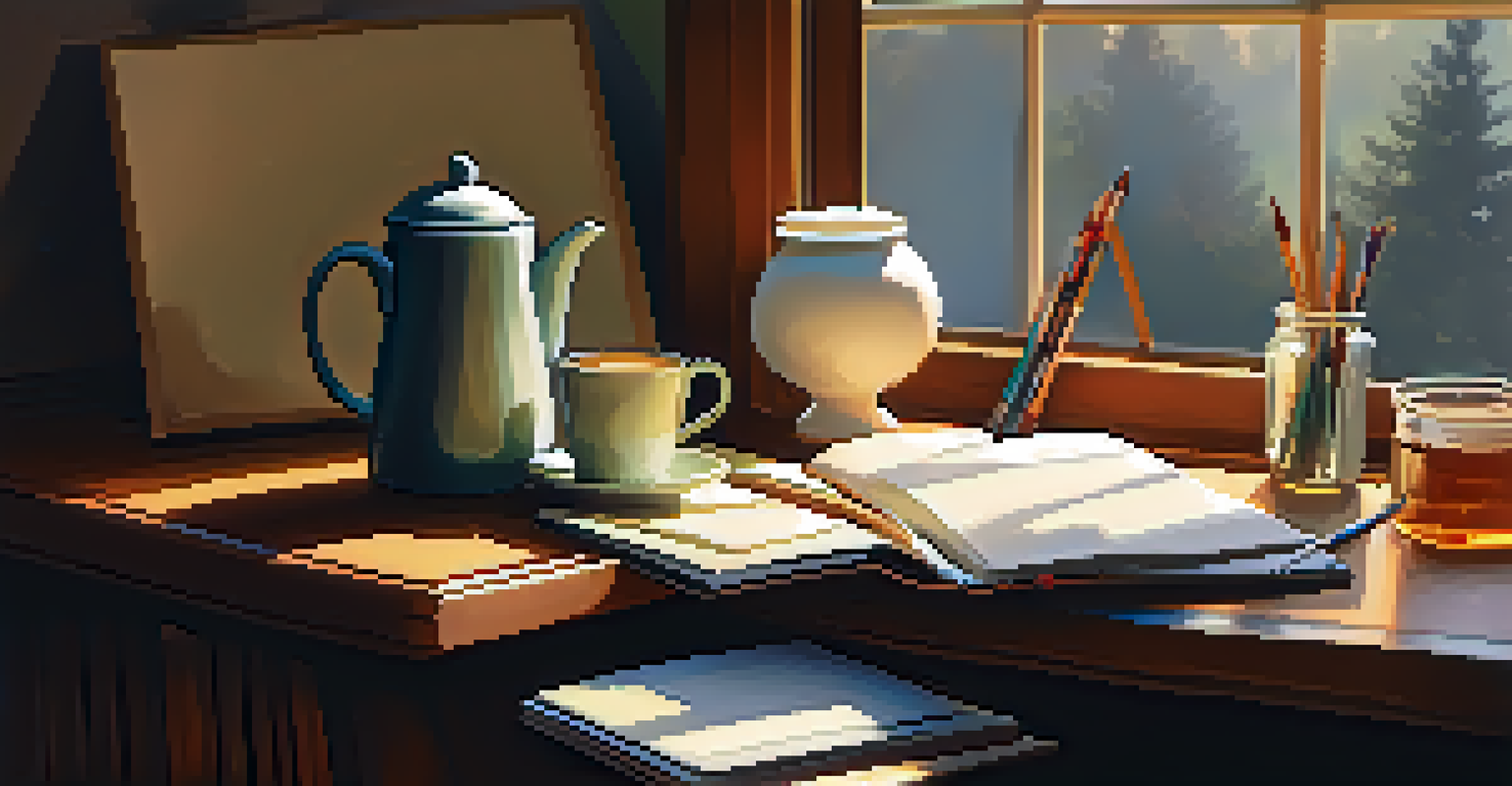Art as a Spiritual Practice: Creating with Intention

Understanding the Connection Between Art and Spirituality
Art and spirituality often intertwine, creating a unique space for self-expression. When we engage in artistic activities, we tap into deeper parts of ourselves, allowing emotions and thoughts to flow freely. This connection can help us explore our beliefs, values, and even our purpose in life, making the act of creation more than just a hobby.
Art enables us to find ourselves and lose ourselves at the same time.
Many artists throughout history have used their craft as a means to explore spiritual themes. From the vibrant colors of a Kandinsky painting to the serene landscapes of a Monet, art serves as a conduit for expressing the ineffable. This connection can inspire us to reflect on our own spiritual journeys and find meaning through creativity.
By approaching art as a spiritual practice, we open ourselves to new perspectives and insights. This journey encourages mindfulness, helping us to stay present and engaged in the moment while we create. In essence, art becomes a path to self-discovery and personal growth.
Creating with Intention: Setting the Stage
Setting an intention before creating art can profoundly impact the outcome of your work. This could be something simple, like wanting to express joy or sadness, or more complex, such as seeking healing or clarity. By clearly defining your intention, you create a focused space for exploration and discovery.

To set the stage for intentional creation, consider your environment. Choose a space that feels comfortable and inspiring, whether it's a bright studio, a cozy corner of your home, or even outdoors. Surround yourself with materials that resonate with your intention, as they will help guide your creative process.
Art as a Path to Self-Discovery
Engaging in artistic activities allows individuals to explore their beliefs, emotions, and personal growth.
As you begin to create, keep your intention in mind. This practice allows you to remain focused and connected to your purpose, ensuring that your artwork reflects your inner thoughts and feelings. The act of creating becomes a meditative experience, deepening your connection to both the art and your spiritual self.
Mindfulness in the Artistic Process
Mindfulness is the practice of being present and fully engaged in the moment. When applied to art, it encourages us to embrace the process rather than fixate on the final product. This shift in focus can lead to a more fulfilling and enriching creative experience.
The artist is not a different kind of person, but every person is a different kind of artist.
As you create, take time to notice the colors, textures, and movements of your materials. Pay attention to how they feel in your hands and the emotions they evoke. By immersing yourself in these sensory experiences, you cultivate a deeper connection to your work and, in turn, to your spiritual practice.
Incorporating mindfulness into your art can also help alleviate stress and anxiety. It becomes a form of therapy, allowing you to express your thoughts and feelings without judgment. This practice not only fosters creativity but also nurtures your mental and emotional well-being.
The Role of Ritual in Artistic Creation
Rituals can enhance the spiritual aspect of creating art by providing structure and meaning. These can be as simple as lighting a candle, playing specific music, or incorporating a prayer or affirmation before you start. Rituals help set the tone and prepare your mind and body for the creative process.
Consider establishing a personal ritual that resonates with you. This could include dedicating a specific time each week to create, or perhaps engaging in a short meditation session to clear your mind. By making art a ritualized practice, you create a sacred space for exploration and expression.
Intentional Creation Enhances Art
Setting clear intentions and creating a focused environment can significantly influence the artistic process.
Embracing ritual in your artistic practice not only deepens your connection to your work but also fosters a sense of community. Sharing your rituals with others can inspire collaboration and open up new avenues of creativity. Ultimately, these practices help cultivate a sense of belonging and purpose within the artistic journey.
Art as a Reflection of Inner Growth
As we create art with intention, our work often becomes a mirror reflecting our inner growth. Each piece we produce can represent our evolving thoughts, emotions, and experiences, capturing moments of clarity or confusion. This reflection allows us to witness our personal journey over time.
Looking back at previous artworks can reveal patterns and transformations in our lives. You may notice recurring themes, colors, or techniques that signify where you were emotionally or spiritually at that time. This retrospective practice can provide valuable insights into your development and help you identify areas for further exploration.
By embracing art as a reflection of our inner growth, we can celebrate our progress and acknowledge the challenges we've faced. This approach encourages self-compassion and understanding, reminding us that the creative process is just as important as the final piece.
Sharing Your Art: Connecting with Others
Sharing your art with others can be a powerful way to connect and foster community. When you express your authentic self through your work, you invite others to engage with your journey. This connection can lead to meaningful conversations and shared experiences that deepen your spiritual practice.
Consider displaying your art in local galleries, online platforms, or social media. Engaging with fellow artists and art enthusiasts can create a supportive environment where you can learn from one another. This exchange of ideas and experiences enriches your own artistic journey and broadens your perspective.
Sharing Art Fosters Community
By sharing their work, artists can connect with others, inviting meaningful conversations and shared experiences.
Ultimately, sharing your art is not just about showcasing talent; it's about vulnerability and openness. By allowing others into your creative world, you create space for empathy and understanding, reinforcing the idea that art is a shared human experience that transcends individual differences.
Continuing the Journey: Evolving Your Practice
Art as a spiritual practice is an evolving journey that invites us to grow and change. As we create with intention, we discover new aspects of ourselves and our creativity. This ongoing exploration can lead to exciting breakthroughs and revelations in both our art and our spiritual lives.
To continue evolving your practice, remain open to experimentation. Try new techniques, materials, or styles that challenge your current understanding of art. Embrace the idea that there are no mistakes in creativity; every experience can lead to new insights and growth.

As you immerse yourself in this journey, remember to celebrate your progress. Reflect on your artistic evolution and acknowledge the ways in which your practice has enriched your life. By honoring this journey, you reinforce the connection between art and spirituality, allowing both to flourish in harmony.